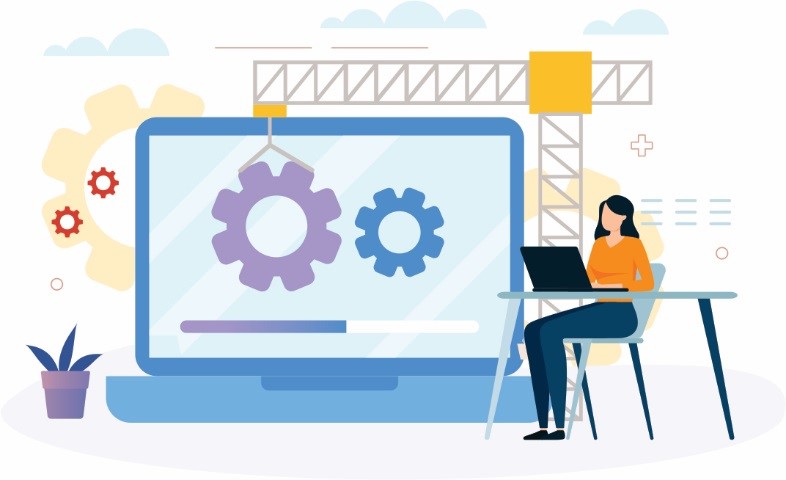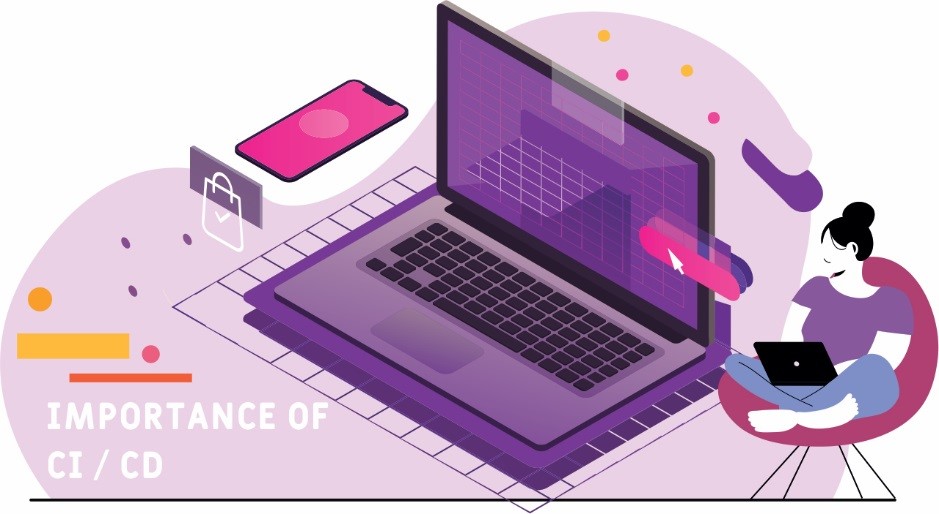In the present digital world, agile software development is crucial. The development approach and processes need to be super fast and flexible that fulfill ever-changing needs of a company. That is when Continuous Integration (CI) and Continuous Delivery (CD) comes into play. CI/CD makes the entire software development process fast, efficient and reliable.
It enables software developers to continually deploy updates into production that speeds up the launch dates, reduces costs and mitigate risks throughout the software development lifecycle.
Working with manual processes poses a higher risk of errors. Anyone can forget to pass information, miss an important step in the testing phase or release codes with tiny mistakes, which later may turn into bigger problems.
By integrating automation into these processes, developers can spend more time writing high-quality code and deliver solutions faster in the market without any interruptions.
You may have many ideas, and your ideas may be the best of all time, but if you are unable to bring them in the real world, then it would be hard for you to survive the competition.
Organizations, that have understood the importance of CI/CD, have already started reaping its benefits by bringing improved software in a lesser time, reducing risk and working more effectively.
What is CI/CD?
Continuous Integration (CI)
Continuous integration is a practice in software development where developers integrate code into a single, shared repository several times a day. This repository is easily accessed by other team members for running frequent tests and fixing bugs.
Each check-in is verified by an automated build, allowing teams to identify faults early. Besides many benefits of CI, its main objective is to accelerate the release of the product by enabling developers to detect and locate problems more quickly and efficiently.
CI also ensures that everyone in the team has an adequate understanding of what is happening in the system, and what features they are developing for the end users.
Continuous Delivery (CD)
Continuous Delivery (CD) picks up where Continuous Integration (CI) ends. CD allows you to take the code stored in the shared repository and deliver continuously to the production unit. In other words, CD is the software development practice of getting all fixes, features, updates and configuration changes either to the production or to the end-users as fast and efficiently as possible.
The codes are always put on a launch-ready state, and are released into the production automatically. This process happens several times a day in order to encourage committing small changes frequently rather than committing large changes infrequently. The primary goal of CD is to streamline deployment processes so the predictable tasks can be executed on demand.
#1 Launch Products Faster in the Market
Failures that are detected early can be fixed faster, and eventually enables final product to be launched faster. However, that is possible only when the code is developed in constantly automated moving system.
Businesses that have effectively implemented CI/CD in their processes can launch new products faster in the market and start generating revenue immediately from the features they have introduced rather than waiting for the entire application to complete before launching it. That is because CI/CD enables fast detecting and repairing errors, which can lead to increase in release rates.
CI/CD continuously integrates codes and deploys them to production after rigorous testing, keeping the code in the deployable state. The team always knows that the code is in good shape as it has passed the testing phase, continuous delivery means the code will be automatically deployed if it meets certain criteria. This enables easy releasing of new features in a less time, and if something doesn’t work, they can be pulled back with a click.
#2 Higher Code Quality

One of the biggest concerns that many developers have about implementing CI/CD is compromising the quality of the code in achieving speed. Quality shouldn’t be tied to the timeline. If you compromise quality with an aim to meet a deadline, chances are you will have bugs in your software.
When implemented correctly, CI/CD offers both speed and quality simultaneously. In fact, it offers the best of both worlds by allowing tight collaboration between product developers and operation teams. This means problems will be detected in early stages.
It further enables developers to focus on writing quality codes rather than stressing about what is happening on the production side. Developers can execute code more frequently and make gradual improvements to the code that work seamlessly across multiple environments.
As apps expand and evolve over time, it also helps organizations maintain quality standards. What’s more, you can always revert to previous versions without affecting other features of the application.
#3 Reduces Costs and Increases Profitability

Since CI/CD standardizes deployment processes across all channels, it enables the teams to systematically verify every change made in the source code. Hence, it reduces the likelihood of any errors and bugs slip through cracks and causing trouble down the line if not detected in the early stages.
It also saves a considerable amount of money spent on software development by eliminating the cost of testing code changes. Developers can spend more time on product development rather than fixing errors.
And, since organizations have to spend less time dealing with bugs, they can deliver high-quality products faster to the market, which eventually leads to higher profits.
Moreover, customers can receive a pleasant experience using your product, which urges them to stick around to your products and recommend to their friends and family. In simple words, increasing code quality with CI/CD also brings higher returns.
#4 Increase Transparency and Get Real-Time Update on the Development Process
CI/CD also enables you to get real-time status of the software development cycle. It not only helps with product testing, but also allows you to assist your team in a better way. Having access to the test results allows everyone on the team to determine the project status, so they can immediately know that what part of the code is causing the problem and what needs to be changed.
A steady flow of these insights can be useful in analyzing problems and fix them to make the end-product even more efficient. Furthermore, CI/CD increases transparency across the team and encourages responsible accountability.
Business partners and stakeholders can check the project status in real time and can spot inefficiencies and bottlenecks, and use this information to optimize the processes. You can also see history of execution and success rates, and use this data to plan your future projects. Teams can carry out better project deployment by keeping everyone focused on the tasks that bring the most value to the business.
#5 Easy Maintenance and Updates

Rolling out regular updates and maintenance is crucial in delivering a great product. CI/CD ensures shorter product release cycles by blocking features that aren’t ready for the release. Furthermore, CI/CD performs maintenance and updates code changes during non-critical hours, so the system performance is not affected during peak traffic hours.
In order to prevent dissatisfaction among customers by updating code changes during peak hours, ensure the pipeline runs smoothly by defining when to make changes and roll out updates.
Another great way to ensure that the entire system is not affected by the maintenance is to include microservices in your code structure. It targets only one area at a time, and only that part of the system is taken down, while the rest of the system continues to function as meant to be.
#6 Boosts Customer Satisfaction

Customers are the heart of any business. As soon as your customers try out your product, it could be a make-or-break moment. When you build and release foolproof product, it will certainly create positive impact on your customers. Hence, CI/CD allows you to leverage this opportunity by automating the processes in order to turn new customers into satisfied customers.
You can keep your customers engaged by introducing new features and fixing bugs faster. Following the CI/CD approach will also keep your products up-to-date with the latest technology and convince customers to choose you over your competitors.
Once the product is out in the market, it also records the few actions of the new customers and keeps a track of the results. CI/CD also enables receiving continuous feedback from the customers which can lead to further usability improvements.
Also, remember that your customers want you to know that they are being heard. Therefore, including new features and bringing updates based on their opinion will help you retain current users as well as gain new ones.
Conclusion
Thus, from above-mentioned benefits, it is pretty clear that CI/CD is crucial in developing, testing and deploying applications to production in the present software development practices. It also plays an important role in bridging the gap between the product being developed and teams being involved.
If you are looking to incorporate CI/CD in your software development process, contact Velox Softech right away. We have experts on board who are well-versed in working with CI/CD tools that can help you create a smooth development flow.



